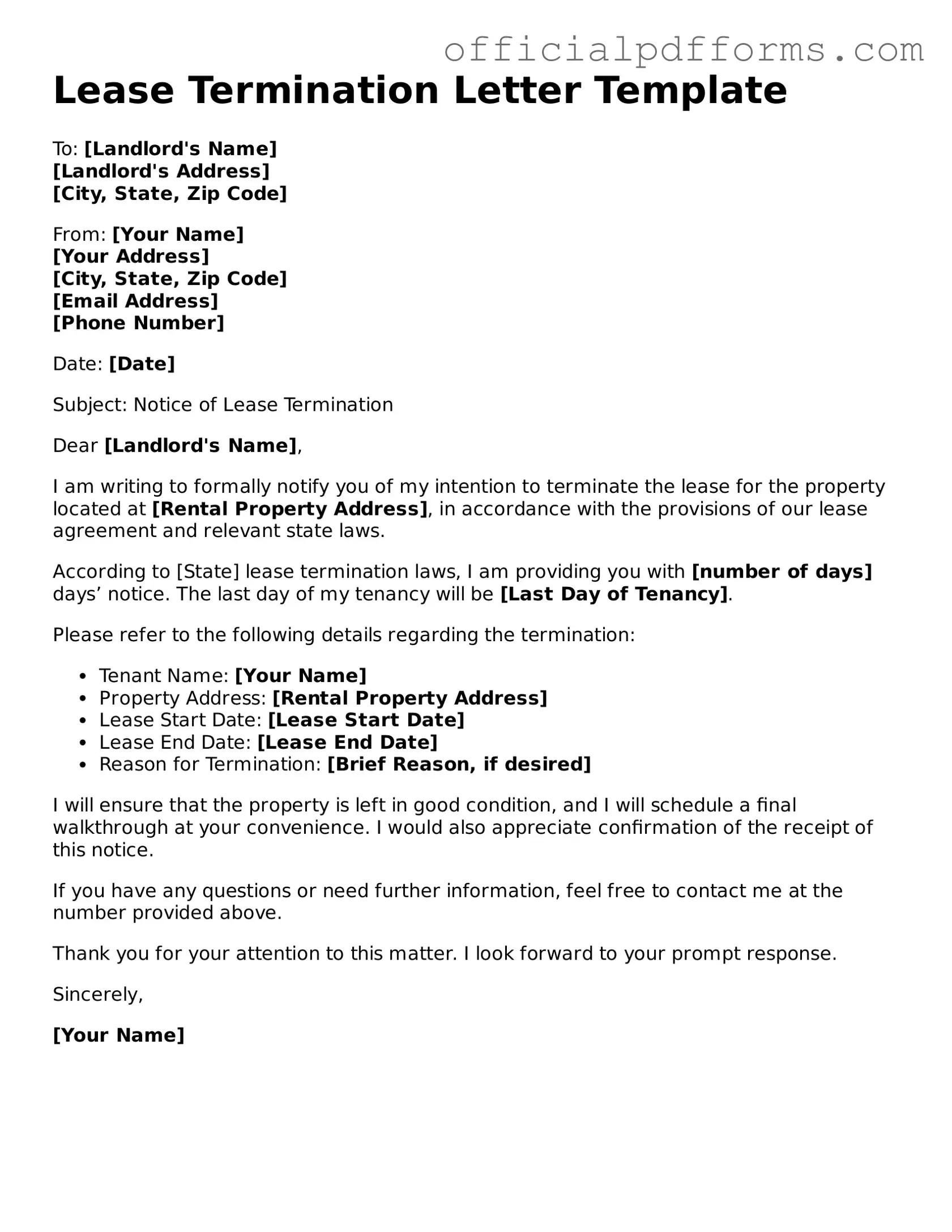What is a Lease Termination Letter?
A Lease Termination Letter is a formal document used by a tenant or landlord to notify the other party of their intention to end a lease agreement. This letter serves as a written record of the decision and outlines the final date of occupancy, ensuring that both parties are aware of the lease's conclusion. It is important for the letter to include specific details, such as the lease start date, the intended termination date, and any necessary instructions regarding the return of keys or security deposits.
When should I send a Lease Termination Letter?
The timing of sending a Lease Termination Letter depends on the terms of the lease agreement. Most leases require a notice period, which can range from 30 to 60 days before the intended move-out date. It is advisable to check the lease for any specific requirements regarding notice periods. Sending the letter well in advance helps to ensure that both parties have adequate time to prepare for the end of the lease.
When drafting a Lease Termination Letter, it is essential to include the following information:
-
Your name and address
-
The landlord's name and address (or tenant's, if applicable)
-
The date of the letter
-
The specific date you intend to terminate the lease
-
A reference to the lease agreement (including start date)
-
Any instructions for the return of keys or security deposits
Including these details helps to prevent misunderstandings and ensures clarity for both parties.
Is a Lease Termination Letter legally binding?
While a Lease Termination Letter is not a legal document in itself, it does serve as a formal notice that can be referenced in case of disputes. It is important to follow the terms outlined in the lease agreement to ensure that the termination is valid. If both parties agree to the terms of the letter, it can be considered a mutual understanding of the lease's end.
What if I change my mind after sending the letter?
If you change your mind after sending a Lease Termination Letter, it is important to communicate this decision to the other party as soon as possible. Depending on the situation and the terms of the lease, you may be able to negotiate a new agreement or extend the lease. However, this will depend on the willingness of the other party to accommodate the change. Always document any new agreements in writing to ensure clarity and prevent future disputes.
